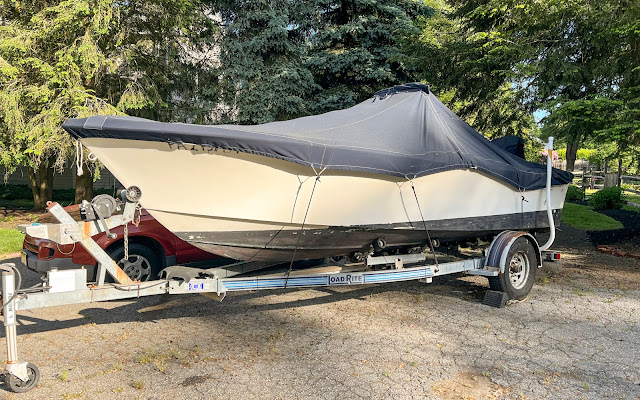I'm not much of an eel guy. Never used them for bait and a only know a little about them. Guys have been slinging eels for big striped bass for decades, maybe centuries. I know the Atlantic City jetty guys are big eel fishermen. You'll find them handling those slippery anguila rostrata from the beach and boat. What prevents anglers from using them are two fold, well three, the cost, keeping them, and the slime.
The Delaware River, the longest un-dammed river this side of the Mississippi, has one of the most abundant habitats for the American eels in the United States. I first learned of eels and the Delaware when guiding on the Upper Delaware. It was there that I met Ray Turner who owns and operates Delaware Delicacies. It is there where Ray traps and smokes eels and sells them commercially out of his
shop and ships them around the world to the finest food establishments. I have seen Ray's eel weir on the East Branch of the Delaware and during my earliest of floats there have even taken the wrong line downriver and have knocked over a stone or two.
This past week I had a bass regurgitate a live eel. It was about five inches long. I wondered, at that small size, is that eel coming, staying out, or going. The eel has an interesting life story. They are catadromous, born in the salt waters and live in the freshwater. So here's a quick eel story. The eels are born in the Sargasso Sea. The Sargasso is a calm area of the Atlantic Ocean east of the Bahamas and south of Bermuda. They grow into elvers, or glass eels, when they make the transition from salt
to fresh water. Interestingly elvers can fetch up to $2,000 per pound on the Asian markets due to their medicinal properties. They then grow into juvenile eels, like the one that got spit out by my bass a few days ago. The males spend most of their lives in the mid to lower rivers and the females more up at the headwaters. They can live their up to twenty years before the migration back to the Sargasso Sea to spawn and die. The trip from the Upper Delaware to the Sargasso Sea is over 1,000 miles. The New Jersey freshwater eel record is 6 pounds 13 ounces and was caught in Round Valley Reservoir and the saltwater record is 9 pounds 13 ounces and was caught off Atlantic City in 1988. Makes grow to 24 inches and females can top 40 inches.
Where mole crabs, aka sand fleas, have become the bait and even fly fisherman's go-to along the beaches in late spring through the summer, eels have become the staple for boat anglers catching big, like huge, striped bass when they aren't up on top blowing up on bunker. Drifted with the tides in and along the
channels eels are like crack to striped bass. There's none better at it than Chuck Manny who must have caught over 100,000 pounds of striped bass in his career. He does it off New Jersey and then heads south during the winter to catch even more. Imagine having a day catching over 100 striped bass with the smallest 30 pounds and the largest 52 pounds. Those boys arms must have been ready to fall off.
When you spend most of your striped-bass-fly-fishing-life targeting and hopefully catching 30 inch striped bass, and loving it, these behemoths almost seem like they are another species. I'd take a 30-inch fish all day sight fishing on the Vineyard, while wading the Delaware, or by dragging flies through the cuts and troughs along the beach. For me, there's nothing better than standing in the water while trying to fool a fish into biting. But boy are those big bass. Maybe by the fall or next spring I'll have
the boat ready to go. It's funny, me and these boats, once I have a run of problems or mishaps I just lose total confidence in myself and in the boat. That goes for boats big and small. I need to work on that a bit. I don't know why, it's not like I've ever anything bad happen out there....







